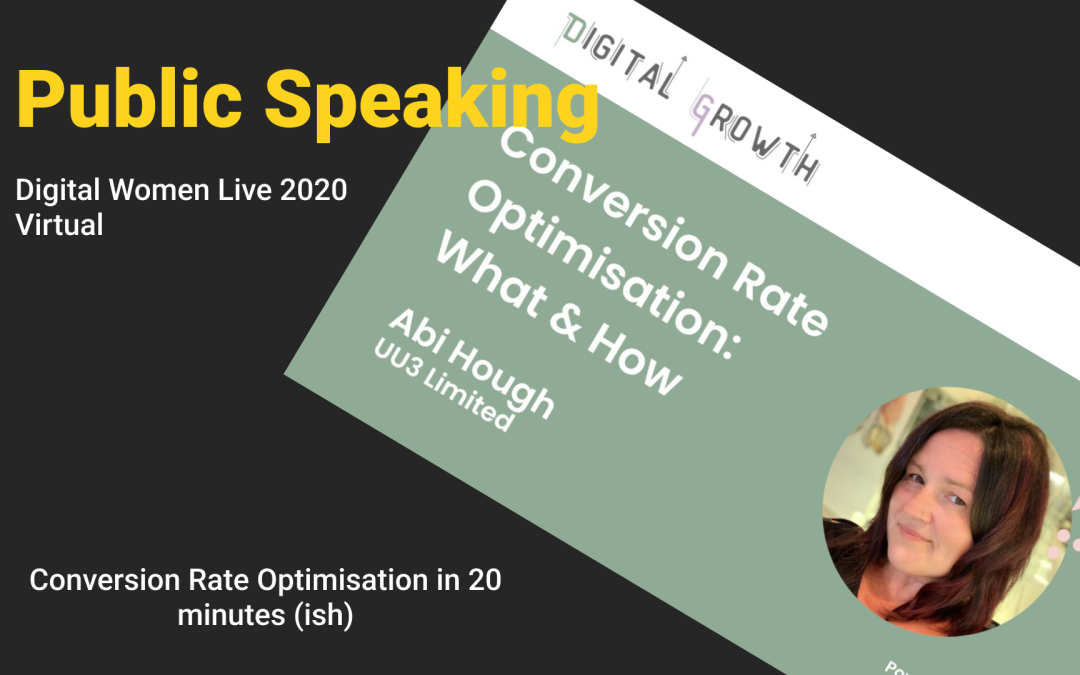Digital Women Live 2020, Virtual
Key Themes:
What is CRO?
- A continuous process that aims to increase the number of people performing desired actions (buying, subscribing, engaging).
- It’s not a one-time fix — it’s about ongoing testing, learning, and improving.
The CRO Process
- Analyse: Use analytics to find friction points (bounce, abandonment, low interaction). Understand the business model, profit sources, and roadblocks.
- Research: Customer surveys, user testing, live chat transcripts, heuristics, biometrics, device testing, heatmaps, and more. Understand what’s happening and why users behave the way they do.
- Insights: Identify problems from analysis and research. Develop hypotheses to solve friction points.
- Prioritise: Use a prioritisation framework (like PXL) to focus on changes that have the biggest impact for the least effort.
- Experiment: Set up A/B tests to compare variations. Measure performance based on pre-set goals and statistical significance.
Running a Good A/B Test
- Hypotheses have three parts: Because we observed → We believe that → We’ll know this when.
- Tests require enough traffic and conversions (ideally 500–1000 outcomes/month).
- If you don’t have enough traffic, still optimise by researching, analysing, prioritising, and implementing changes without formal A/B testing.
Important Reminders
- Data is the truth — not opinions.
- Growth mindset is key — learn from failure.
- Optimisation is ongoing — things change over time.
- Think beyond the website — apply CRO thinking across the whole business.
Tools & Resources Suggested
- Analytics tools, UX research platforms, A/B testing calculators, accessibility checkers.
- Lots of free resources are recommended for companies with limited budgets.
Main message:
CRO is a long-term mindset focused on continuously improving customer experience and business results through data, research, and testing.

Recent Comments